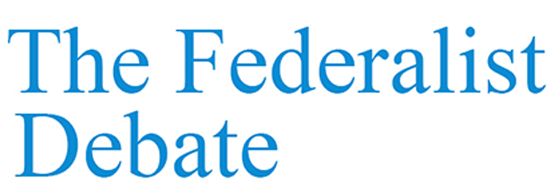France and European Resistance. A Contribution to a Common Legacy
Giampiero Bordino
Professor in Contemporary History and Political Analyst. President of the Einstein Center for International Studies
Robert Belot
Résistance et conscience européenne. Henri Frenay, de Gaulle et les communistes (1940-1947)
Presse Fédéraliste, Lyon, 2021
The European dimension of the anti-fascist and anti-Nazi resistance in the various countries of the continent is one of the great historical legacies that nourish the construction of Europe's political unity in the post-war period and until today. Two fundamental values, essential everywhere to the civilization process, have their roots precisely in those events: peace between states (the Kantian peace guaranteed by institutions and law, not a simple truce based on goodwill), and democracy (liberal democracy, which puts political rights and civil liberties together). Peace and democracy, declined in its various aspects, including the social ones represented by justice and equality, are the cornerstones of the model that identifies Europe in the world. A legacy that must be preserved and developed today, if Europe does not want to "lose" (in globalization and the ongoing world competition) and at the same time "lose itself" (that is, lose its identity and its soul).
A significant contribution to outline and narrate this legacy is given by the recent book by the French historian Robert Belot, author also in 2003 of the biography of Henri Frenay (Henri Frenay. De la Résistance à l'Europe, Editions du Seuil), one of the protagonists of the French Resistance, founder of Combat, one of the main anti-Nazi political-military movements in France, and in the postwar period among the leaders, for more than a decade, of the Union of European Federalists (UEF).
In France, in the years of the Nazi occupation and Pétain's collaborationism, the European dimension of the Resistance originated and developed with difficulty, "restrained", so to speak, between the Gaullist neo-nationalism and the pro-Soviet communism, which, albeit quite different from one another, were united, however, in a sort of common “sovereignist front”. As Belot's essay analytically documents, only with time, and in an anyhow difficult and conflicting dialectic, the "desire of Europe" (which had also to include a new Germany, no longer Nazi) emerged and affirmed itself in the armed struggle and in the political debate. In October 1943, in Combat, the clandestine newspaper of the homonymous political movement, Frenay wrote significantly: "Without doubt, this war, even more than the previous one, is a political war ... it opposes two conceptions of life ... freedom vs. slavery, equality vs. inequality, justice vs. injustice”. Its watchword is "liberate France and liberate Europe", and in this context also includes Germany and Russia. On Germany, in a wholly European and anti-nationalist perspective, and with great truth and great courage, it is written: “We do not forget that the German Resistance was the first, the first to be martyred; we do not forget Dachau and the many socialist, catholic and communist militants who disappeared without trace”.
The war in progress is therefore not so much a war between different and opposing nation states (France and Germany in particular), but between different and opposing political regimes, different and opposing views of life, different and opposing systems of values that go across the different national societies. In this perspective, comes to mind what wrote in the years of the anti-Nazi struggle the philosopher Albert Camus, one of the great intellectuals of contemporary Europe, director of Combat. In his Letters to a German friend of 1943, Camus expresses his cosmopolitan and European sentiment with great intensity: "Sometimes it happens to me, on a street corner, in those short pauses left by the long hours of the common struggle, to think at all those places in Europe that I know well ... My memory has merged those superimposed images up to the point of forming a single image, which is that of my greater homeland”.
The "desire of Europe", of which we spoke earlier, took shape and political consistency in May 1944, with the International Federalist Declaration of the Resistance Movements, drawn up in Geneva through a series of meetings held between March and May of that year. In this declaration was decisive the contribution of the Italians Ernesto Rossi and Altiero Spinelli, already authors in 1941, in collaboration with Eugenio Colorni, of the famous and prophetic (in that year Nazism and Fascism were still dominating Europe) Ventotene Manifesto, and later founders in August 1943, in their hiding in Milan, of the European Federalist Movement.
A significant and relevant “thread”, therefore, links together, over the years, the various Resistance movements in Europe. In the Federalist Declaration of 1944, to give another example, it is the Frenchman Jean-Marie Soutou who contributed significantly to the drafting of the text (specifically the points 1 and 6 of the Declaration) together with Rossi and Spinelli. And it is another Frenchman, Jacques Strohl, who wrote and presented in April 1944, during the same meetings in Geneva, a Projet d’unification européenne.
Frenay, Rossi, Spinelli, Camus, and many others, more or less known, built during the Resistance and in the post-war period an idea of Europe which is today one of the vital roots of the European Union, and which goes far beyond the ideas of "Europe-currency" and "Europe-market", often prevalent today in people's minds.
Forgetting or abandoning this idea and this experience would mean, for Europe and for Europeans, as has already been said, "losing" challenges, and at the same time "losing themselves". In short, an announced suicide.

